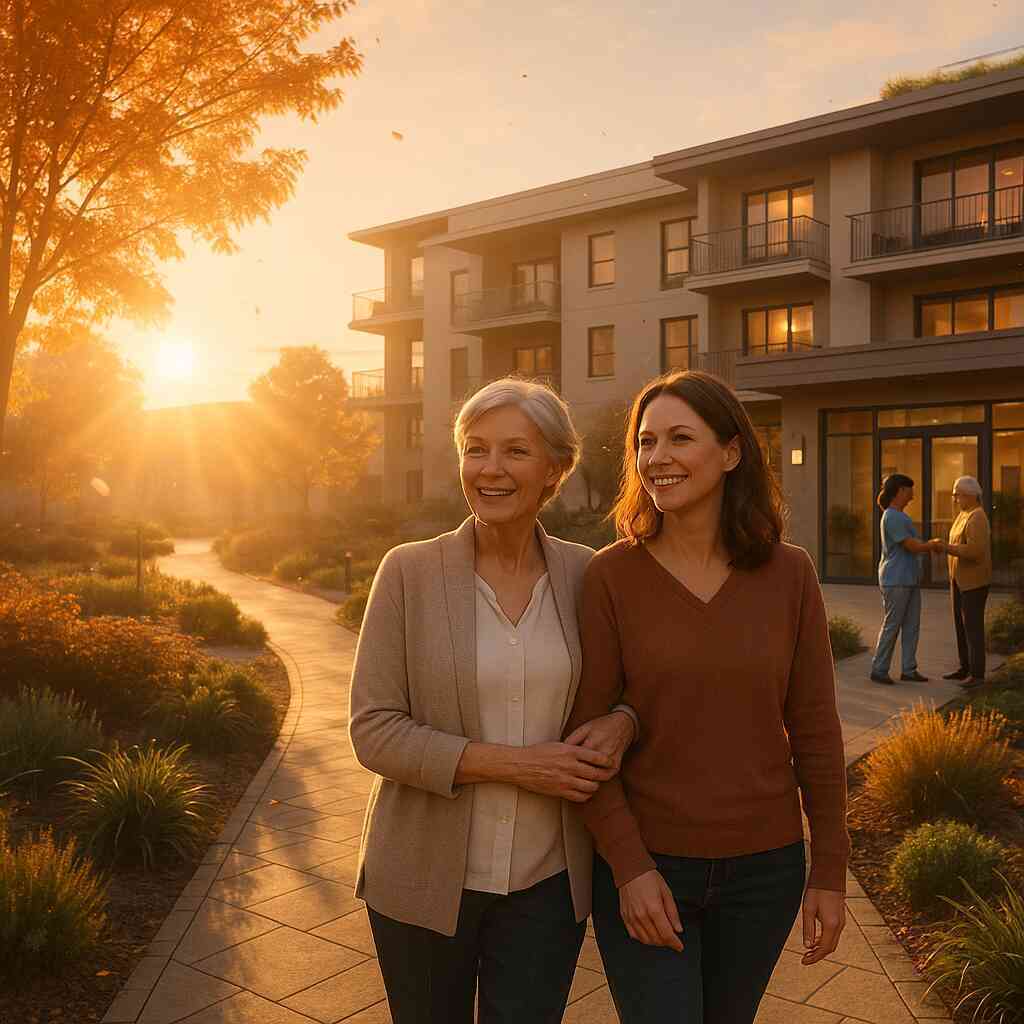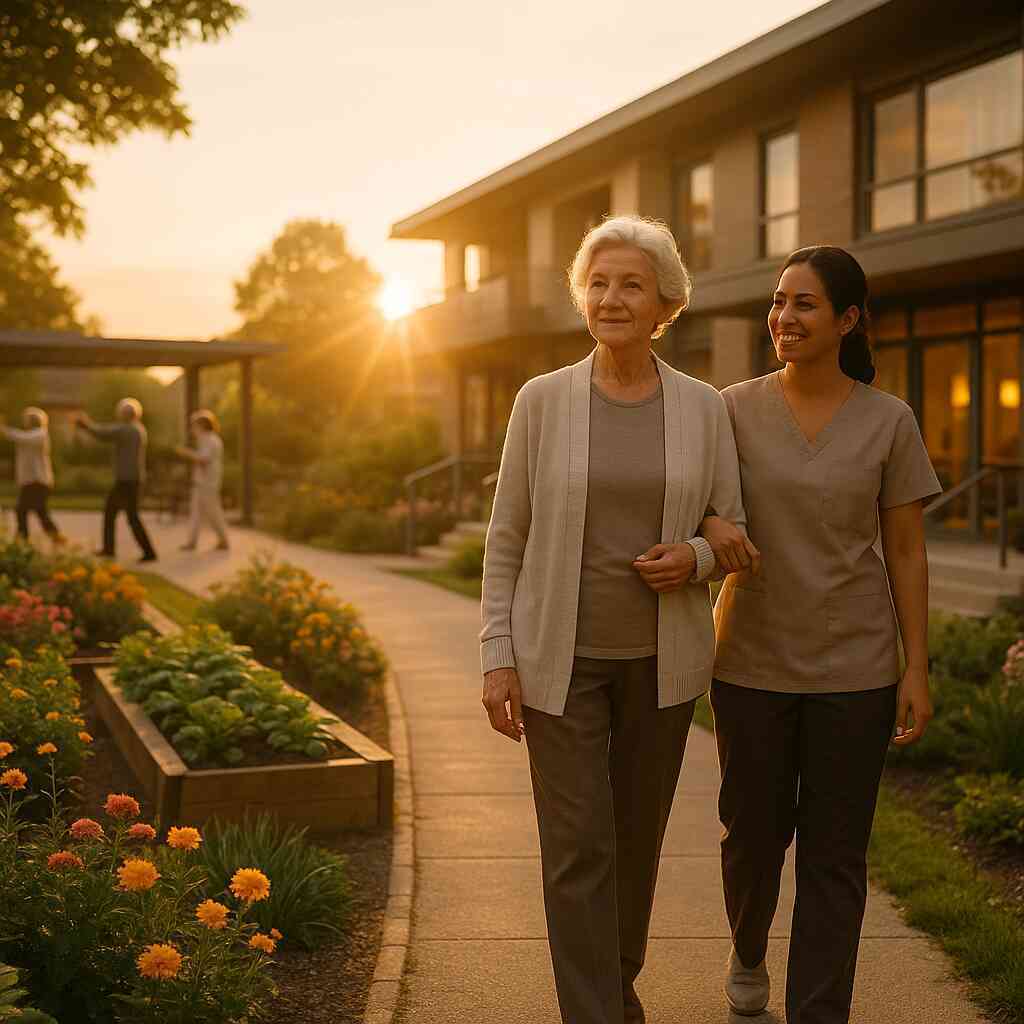
A Closer Look at Life Inside a Senior Living Facility
October 25, 2023
Understanding Senior Living Facilities
Types of Senior Living Facilities
Living inside a senior living facility offers a realm of experiences and insights that can be both enlightening and comforting. From independent living communities to assisted living and memory care centers, senior housing has expanded to cater to various needs of the aging population. Each type offers unique benefits, with 55+ communities focusing on active adult living, while memory care centers provide specialized support for those with cognitive challenges.
Perusing options from Senior Living Facilities in California to Senior Living Facilities in New York showcases the vast array of accommodations available. Retirement homes, for instance, provide a community setting for those looking to enjoy life after retirement. On the other hand, long-term care facilities emphasize continuous healthcare and support.
The Evolution of Senior Care
Historically, elder care was primarily a family responsibility. However, as our society evolved, so did the ways we care for our elderly. With the rise of senior housing and retirement communities, there has been a significant shift towards professional and institutional elder care. This transition ensures seniors can age gracefully, with access to various wellness programs, amenities, and activities tailored to their needs.
Furthermore, the design and infrastructure of senior living facilities have witnessed innovations. Adaptive features and senior-friendly designs focus on elder comfort and safety, making them integral parts of modern senior care services.
Choosing the Right Facility
Selecting the perfect senior living facility is an essential decision. When you browse through options, whether it’s Senior Living Facilities in Texas or Senior Living Facilities in Florida, understanding the specific needs of your aging parents or loved ones is crucial. Factors to consider include the level of care required, location, amenities offered, and, importantly, resident feedback from each facility.
Additionally, scheduling community tours and engagements can provide invaluable insights. By interacting with the staff, observing resident satisfaction, and assessing the overall environment, one can gauge if the facility aligns with the preferences and requirements of the elderly individual.
Daily Life in a Senior Living Facility
Routine and Activities
Life inside a senior living facility is bustling with activities and routines designed to promote senior engagement and mental well-being. From therapeutic activities tailored for mental stimulation to recreational pastimes that ensure elder recreation, every day is structured to foster happiness and fulfillment.
Resident activities range from arts and crafts sessions, group exercises, cultural programs, and even community events. Such an environment not only promotes senior hobbies but also ensures consistent social interactions, a key to happiness in later years.
Socialization Opportunities
One significant advantage of living in a senior living facility is the plethora of socialization opportunities. Senior socialization plays an essential role in maintaining good mental health, and facilities ensure that seniors can engage in numerous social interactions daily.
From group activities to community dining and exploring Our Blog, residents get ample opportunities to forge new friendships. Whether one is at a senior center in Nebraska, engaging with posts on our blog, or a retirement community in Hawaii, bonding and camaraderie among residents are palpable, making for a supportive environment.
Health and Wellness Programs
Importance of Physical Fitness
As we age, maintaining physical fitness becomes more critical. Senior living facilities emphasize the importance of senior fitness through specialized programs. From group exercises tailored for the elderly to individualized sessions, there’s something for everyone.
Furthermore, many facilities, whether it’s Senior Living Facilities in Colorado or Senior Living Facilities in Michigan, have on-site fitness centers. These centers are equipped with senior-friendly equipment, ensuring residents can maintain an active lifestyle in a safe environment.
Wellness and Recreational Activities
Wellness goes beyond physical fitness. In a senior living facility, the holistic wellness of residents is a priority. Recreational activities ranging from meditation sessions, art therapy, music lessons, and even gardening provide seniors with avenues to express themselves and find joy.
These activities are not just recreational but therapeutic. They play a crucial role in ensuring the mental well-being of the residents, offering them avenues to explore new hobbies and rediscover old passions.
Mental Health Resources
Mental health is as crucial as physical health, especially in our golden years. Senior living facilities recognize this and provide resources tailored to the unique mental health needs of the elderly. From counseling services, support groups for those dealing with grief or loneliness, to specialized programs for residents with cognitive challenges, the focus is on ensuring mental tranquility.
Moreover, facilities prioritize creating an environment where residents feel safe and comfortable discussing their mental health challenges, ensuring they receive the necessary support.
Safety and Security Measures
On-Site Medical Assistance
Safety is paramount in a senior living facility. Recognizing this, most facilities offer on-site medical assistance. Whether one needs routine check-ups, health monitoring, or more specialized care, medical professionals are readily available.
From Senior Living Facilities in Georgia to those in Oregon, having medical staff on-premises ensures that residents receive prompt care. This presence not only provides peace of mind to residents but also to their families, knowing their loved ones are in capable hands.
Emergency Response
Emergencies are unpredictable, but being prepared for them is essential. Senior living facilities are equipped with state-of-the-art emergency response systems. Whether it’s a medical emergency or any other unforeseen event, the staff is trained to respond promptly and efficiently.
Safety features like emergency call buttons, 24/7 surveillance, and well-rehearsed evacuation plans ensure that residents are always in a secure environment. These measures are standard across facilities, whether you’re looking at Senior Living Facilities in Pennsylvania or those in Arizona.
Resident Safety Features
Beyond emergency response, resident safety is enhanced through various features tailored for the elderly. From mobility assistance features like handrails and non-slip flooring to adaptive features for those with special needs, the design of the facilities centers on resident safety.
Senior safety also extends to areas like medication management. Dedicated staff ensure that residents receive their medications on time and in the right dosages, removing any potential risks.
Specialized Senior Care
Memory Care and Dementia
As our loved ones age, challenges like dementia or Alzheimer’s might surface. Senior living facilities offer specialized memory care units tailored to cater to the unique needs of these residents. Trained staff, therapeutic activities tailored for cognitive support, and a safe environment ensure that residents receive the best possible care.
Whether one is exploring Senior Living Facilities in New Jersey or those in Illinois, memory care units stand out with their dedication to ensuring residents lead fulfilling lives despite their cognitive challenges.
Managing Chronic Conditions
Chronic conditions, whether diabetes, arthritis, or heart ailments, require constant care. Senior living facilities are equipped to manage these conditions, ensuring residents remain healthy. Regular check-ups, specialized diets, and therapeutic activities are all part of the regimen.
Moreover, healthcare coordination is streamlined. Whether it’s coordinating with external specialists, ensuring regular tests, or managing medications, the facilities prioritize the health of their residents.
Medication Management
Medication management is crucial, especially for the elderly who might be on multiple medications. Senior living facilities employ trained staff to ensure that residents receive the right medicines at the right time.
From ensuring that prescriptions are up-to-date to coordinating with pharmacists and primary care providers, the focus is on eliminating any medication-related risks. This systematic approach provides peace of mind to residents and their families.
Community and Family Involvement
Family Participation and Support
Family involvement is encouraged in senior living facilities. Whether it’s participating in community events, attending family days, or simply spending quality time with their loved ones, families play a crucial role in the lives of the residents.
Facilities, be it Senior Living Facilities in Alaska or those in South Dakota, often have family councils. These councils provide a platform for families to voice concerns, give feedback, and actively participate in the decision-making processes of the facility.
Community Events and Gatherings
Community events and gatherings play a pivotal role in fostering camaraderie and a sense of belonging among residents. From festive celebrations to cultural programs and community tours, there’s always something happening.
Such events also provide residents with a platform to showcase their talents, engage in recreational activities, and bond with their peers. Moreover, these gatherings often extend beyond the residents, involving families, staff, and even the local community, fostering a true sense of unity.
Financial Considerations
Understanding the Costs
One of the pressing concerns when considering a move to a senior living facility is the financial aspect. Costs vary based on the type of care required, location, and amenities offered. For instance, costs might differ when comparing Senior Living Facilities in Montana to those in Connecticut.
It’s essential to understand the breakdown of costs, from accommodation to care services and additional amenities. Most facilities provide detailed financial breakdowns, ensuring transparency and helping families plan better.
Financial Assistance Options
Financial planning for elder care can be daunting. However, many senior living facilities offer financial assistance options. From scholarships to sliding fee scales based on income, there are ways to make senior living more affordable.
Additionally, facilities often have financial counselors on board. These professionals guide families through the various financial assistance options available, ensuring that cost is not a barrier to quality care.
Insurance and Medicare/Medicaid
Understanding how insurance, Medicare, and Medicaid come into play is vital. Many senior living facilities accept insurance and are Medicaid/Medicare certified. This certification ensures that a significant portion of the costs can be covered, making senior care more accessible.
However, it’s crucial to understand what’s covered and what’s not. Engaging with the facility’s financial team can provide clarity, ensuring that there are no surprises down the line.
Transitioning to Senior Living
Preparing for the Move
Moving to a senior living facility can be both exciting and daunting. Preparing for this transition is essential. Facilities often provide resources, from checklists to advice on downsizing, ensuring that the move is as smooth as possible.
Additionally, many facilities, whether it’s Senior Living Facilities in Maryland or those in West Virginia, have move-in coordinators. These professionals assist families throughout the process, ensuring a seamless transition.
Settling In The First Few Months
The initial months in a new environment can be challenging. Recognizing this, senior living facilities have programs in place to help residents settle in. From buddy systems pairing new residents with seasoned ones to orientation programs and welcoming committees, the focus is on making the new resident feel at home.
Feedback mechanisms are also emphasized. New residents are encouraged to voice their concerns, provide feedback, and actively participate in the community, ensuring their smooth integration.
Residents’ Rights and Advocacy
Understanding Resident Rights
Every resident in a senior living facility has rights, from privacy to making decisions about their care. Understanding these rights is crucial, both for the resident and their family. Facilities ensure that residents and their families are well-informed about these rights.
From the right to personal autonomy to the right to voice concerns without fear of retaliation, these rights are enshrined in the facility’s policies, ensuring that every resident is treated with dignity and respect. For those seeking such facilities, you can Find Senior Living Facilities Near You to explore your options.
Advocacy and Legal Support
Sometimes, issues arise, and having an advocacy system in place is crucial. Many senior living facilities have ombudsmen or resident advocates. These individuals assist residents and their families in voicing concerns, ensuring their rights are upheld.
Legal support is also often available. From understanding contracts to navigating the complexities of elder law, residents and their families have the resources they need to ensure their rights and interests are protected.
Conclusion: Future of Senior Living Facilities
The Role of Innovation in Elder Care
Innovation is at the forefront of improving elder care. Senior living facilities are embracing new methodologies, from personalized care plans based on genetics to incorporating virtual reality for therapeutic purposes.
Moreover, facilities are forging community partnerships, collaborating with academic institutions, tech companies, and healthcare providers. These collaborations are driving the future of elder care, ensuring that residents receive the best possible care.
Trends Shaping the Next Decade
As the aging population grows, the demand for senior care services is set to increase. Facilities are gearing up for this change, from expanding their capacities to incorporating adaptive features catering to the diverse needs of the residents. A focus on mental well-being, the rise of 55+ communities, and an emphasis on life after retirement are just a few of the trends shaping the future. In conclusion, senior living facilities offer a holistic approach to elder care. From health and wellness to social engagement and specialized care, these facilities are equipped to handle the diverse needs of the aging population. For more information, exploring options like Senior Living Facilities in New York or understanding the nuances of senior care in places like Texas, our website provides a wealth of resources. Contact Us to delve deeper or if you have any specific queries. Discover the world of senior living today and embark on a journey of aging gracefully.


